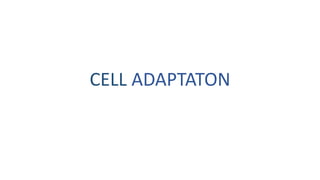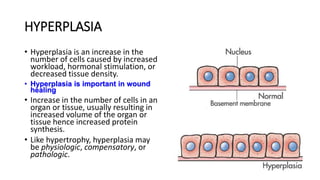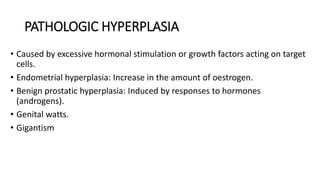Cell adaptation involves changes cells undergo in response to stimuli. Cells can adapt by changing size (atrophy and hypertrophy), number (hyperplasia and atrophy), or form (metaplasia). Atrophy is a decrease in cell size due to decreased protein synthesis. Hypertrophy is an increase in cell size due to increased protein synthesis. Hyperplasia is an increase in cell number. Metaplasia is the replacement of one cell type with another. Adaptations can be physiological or pathological responses. Dysplasia and anaplasia represent abnormal cellular changes that can precede cancer.























